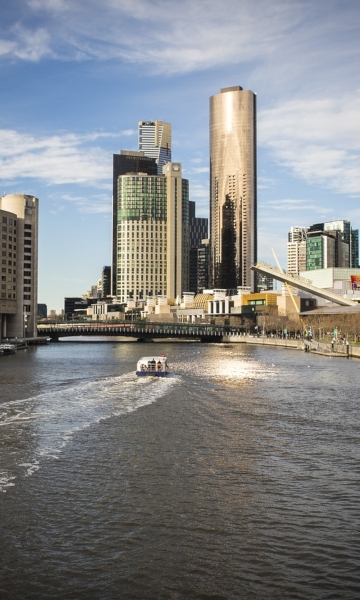Since its foundation in 1835 by colonists from Van Diemen’s Land – present-day Tasmania – a lot has changed in the Australian city of Melbourne, starting with the gold rush that transformed the settlement into one of Australia’s richest towns under British rule to the continuous arrivals of migrants from Greece, Turkey, China and Vietnam among others.
The city is still a major economic and financial centre, and is now home to a population of approximately 5 million (19% of the population of Australia), one third of whom were born overseas. So what’s the result of all this prosperity and ethnic diversity? The city has great restaurants, amazing career opportunities, interesting museums, leading schools, an extensive cultural offering and impressive buildings.
These are the kind of things that tend to get cities noticed. Melbourne was thus voted the most liveable city in the world for the seventh year running by the Economist Intelligence Unit. This leading British company establishes a Global Liveability Ranking of over 200 countries, based on such criteria as entertainment, tourism, education, healthcare, research and development.
In short, Melbourne is doing really well.
But like all major cities around the world, Melbourne has to closely monitor its urban planning, public health and general well-being. And it has to be said that the city is also doing an outstanding job on this level. Here are some of Melbourne’s ‘smart’ initiatives.
1. Tree analysis
Melbourne currently has approx. 70,000 trees, which are registered and closely monitored in a database.
Down under, trees are used for more than just decorative purposes - they also help keep the city cool. They have been planted on streets, where the risk of super-hot temperatures is substantially higher and where the current canopy cover is too low. In Oceania, tall trees are now considered a vital measure to help cities adapt to climate change and the increasingly higher temperatures.
As the trees are categorised by age, they can also be replaced in time, which is vital for the ecosystem. While the lifespan of dying trees can be extended, by administering certain treatments, they should be removed as soon as they no longer contribute to the local ecosystem.
Another important aspect is diversity. A lack of diversity means trees are more vulnerable to pests and diseases. Traditionally, Melbourne has always had a lot of eucalyptus, plane trees and elms but these will soon be replaced to maintain a diverse tree population.
By smartly managing their trees, the city council is contributing to the well-being of the community and the environment in other words.
2. Counting pedestrians
Walking is important in a city because pedestrian activity is an indicator of the vitality of an urban environment, which is why Melbourne has developed an automated system to count pedestrians and better understand pedestrian activity in the city. This information can only be used to examine how pedestrian activity changes, depending on the location and time of the day. It also becomes a factor in the municipal decision-making and planning process however.
The data is integrated in the Pedestrian Counting System. This digital tool logs the following:
- The actual location of pedestrians and their number
- A comparison with the previous 4 or 52 weeks at the same time on that same day
- The impact of factors such as large events or extreme weather conditions on pedestrian activity and a comparison of the pedestrian flow with short and long-term averages.
This data can also be downloaded for further analysis and display options.
3. Waste management
Melbourne has a total of 2,700 litter bins and recycling containers, for public and commercial use.
400 of these public litter bins are solar smart bins. Sensors detect when they are full and alerts the waste collection services. They are also fitted with a compactor, thus maximising capacity. The garbage men thus have to collect rubbish much less frequently, which in turn reduces CO2 emissions and congestion in the city.
Besides this, the city has 500 special litter bins for cigarette butts, which are considered the greatest pollutants of street pavers around the world, along with chewing-gum. Did you just dispose of your cigarette butt on the street? Then expect to be fined.
As you can see, Melbourne takes proactive measures making the city a nice place to live and work. Check the links below to find out more about Melbourne’s Smart City activities!
